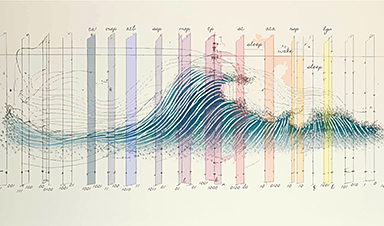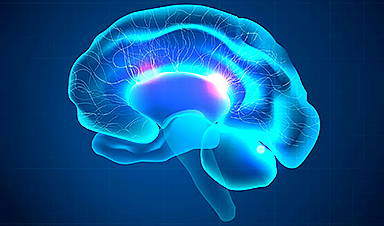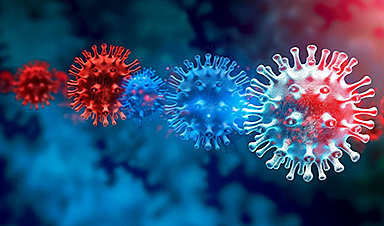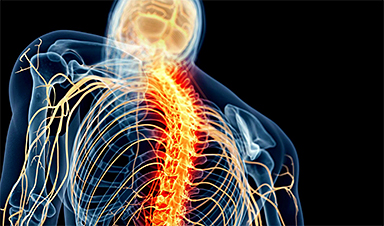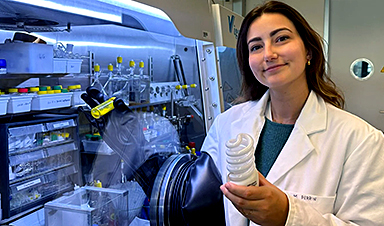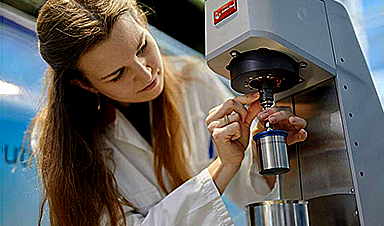Moderna has developed a new and improved version of its COVID-19 vaccine. The unique formulation (mRNA-1283) reduces the vaccine’s content from the full-length SARS-CoV-2 spike protein to a narrowly focused encoding of just two segments—the N-terminal domain (NTD) and the receptor binding domain (RBD).
Some of the highlights of the new formula include:
- Improved antigen expression: mRNA-1283 demonstrated improved antigen expression compared to the clinically available mRNA-1273, which encodes the full-length spike protein. This suggests that mRNA-1283 can produce higher levels of the target antigens.
- Enhanced antibody responses: When administered as a primary series, booster, or variant-specific booster, mRNA-1283 elicited similar or greater immune responses than the original mRNA-1273.
- Greater stability: mRNA-1283 showed greater stability at refrigerated temperatures (2° to 8°C). Specifically, mRNA-1283 reached 62% of its initial integrity at 12 months when stored at 2° to 8°C, while the original version reached 63% integrity after only six months under the same conditions, effectively doubling the shelf life.
- Dose-sparing: mRNA-1283 demonstrated the ability to elicit effective immunogenic responses even at lower doses, suggesting the possibility of dose-sparing, which could reduce potential reactogenicity.
- Protection against variants: mRNA-1283, including variant-specific versions, produced more significant neutralizing antibody (nAb) responses against variants such as B.1.351 and B.1.617.2 compared to mRNA-1273, indicating its effectiveness against emerging variants.
Protection in animal models
In animal studies, mice vaccinated with mRNA-1283 were protected from both the D614G mutation and BA.1 variants of SARS-CoV-2, further suggesting that mRNA-1283 can confer protection against different strains of the virus.
Overall, mRNA-1283 offers several advantages, including improved antigen expression, strong immune responses, stability, and dose-sparing, making it a promising candidate for further clinical evaluation as a COVID-19 vaccine.
Early research on the SARS-CoV-2 virus identified the spike protein as a critical component of viral entry into host cells. This knowledge laid the foundation for the original vaccine development by Moderna, which encoded the entire length of the spike protein in the original vaccine formulation.
Researchers have since recognized that not all parts of the spike protein are equally crucial for immune responses. Certain regions, particularly the receptor binding domain (RBD) and the N-terminal domain (NTD), were identified as critical sites for neutralization by antibodies.
Extensive research into the structure and function of the SARS-CoV-2 virus, including its spike protein, provided valuable insights into potential vaccine targets. Scientists used this research to design vaccines specifically focused on the RBD, NTD, or a combination of these domains.
A combination of a deep understanding of the virus, advances in vaccine technology, and rigorous scientific research contributed to the discovery that domain-based vaccines like mRNA-1283 can focus on just the critical antigenic domains of the spike protein.
An effective streamlined and targeted vaccine should also allow for a shorter response time to emerging strains as reformulation efforts only need to focus on the changes of two sites on the virus spike protein.
More information: Guillaume B. E. Stewart-Jones et al, Domain-based mRNA vaccines encoding spike protein N-terminal and receptor binding domains confer protection against SARS-CoV-2, Science Translational Medicine (2023). DOI: 10.1126/scitranslmed.adf4100
News
The Silent Battle Within: How Your Organs Choose Between Mom and Dad’s Genes
Research reveals that selective expression of maternal or paternal X chromosomes varies by organ, driven by cellular competition. A new study published today (July 26) in Nature Genetics by the Lymphoid Development Group at the MRC [...]
Study identifies genes increasing risk of severe COVID-19
Whether or not a person becomes seriously ill with COVID-19 depends, among other things, on genetic factors. With this in mind, researchers from the University Hospital Bonn (UKB) and the University of Bonn, in [...]
Small regions of the brain can take micro-naps while the rest of the brain is awake and vice versa
Sleep and wake: They're totally distinct states of being that define the boundaries of our daily lives. For years, scientists have measured the difference between these instinctual brain processes by observing brain waves, with [...]
Redefining Consciousness: Small Regions of the Brain Can Take Micro-Naps While the Rest of the Brain Is Awake
The study broadly reveals how fast brain waves, previously overlooked, establish fundamental patterns of sleep and wakefulness. Scientists have developed a new method to analyze sleep and wake states by detecting ultra-fast neuronal activity [...]
AI Reveals Health Secrets Through Facial Temperature Mapping
Researchers have found that different facial temperatures correlate with chronic illnesses like diabetes and high blood pressure, and these can be detected using AI with thermal cameras. They highlight the potential of this technology [...]
Breakthrough in aging research: Blocking IL-11 extends lifespan and improves health in mice
In a recent study published in the journal Nature, a team of researchers used murine models and various pharmacological and genetic approaches to examine whether pro-inflammatory signaling involving interleukin (IL)-11, which activates signaling molecules such [...]
Promise for a universal influenza vaccine: Scientists validate theory using 1918 flu virus
New research led by Oregon Health & Science University reveals a promising approach to developing a universal influenza vaccine—a so-called "one and done" vaccine that confers lifetime immunity against an evolving virus. The study, [...]
New Projects Aim To Pioneer the Future of Neuroscience
One study will investigate the alterations in brain activity at the cellular level caused by psilocybin, the psychoactive substance found in “magic mushrooms.” How do neurons respond to the effects of magic mushrooms? What [...]
Decoding the Decline: Scientific Insights Into Long COVID’s Retreat
Research indicates a significant reduction in long COVID risk, largely due to vaccination and the virus’s evolution. The study analyzes data from over 441,000 veterans, showing lower rates of long COVID among vaccinated individuals compared [...]
Silicon Transformed: A Breakthrough in Laser Nanofabrication
A new method enables precise nanofabrication inside silicon using spatial light modulation and laser pulses, creating advanced nanostructures for potential use in electronics and photonics. Silicon, the cornerstone of modern electronics, photovoltaics, and photonics, [...]
Caught in the actinium: New research could help design better cancer treatments
The element actinium was first discovered at the turn of the 20th century, but even now, nearly 125 years later, researchers still don't have a good grasp on the metal's chemistry. That's because actinium [...]
Innovative Light-Controlled Drugs Could Revolutionize Neuropathic Pain Treatment
A team of researchers from the Institute for Bioengineering of Catalonia (IBEC) has developed light-activated derivatives of the anti-epileptic drug carbamazepine to treat neuropathic pain. Light can be harnessed to target drugs to specific [...]
Green Gold: Turning E-Waste Into a Treasure Trove of Rare Earth Metals
Scientists are developing a process inspired by nature that efficiently recovers europium from old fluorescent lamps. The approach could lead to the long-awaited recycling of rare earth metals. A small molecule that naturally serves [...]
Cambridge Study: AI Chatbots Have an “Empathy Gap,” and It Could Be Dangerous
A new study suggests a framework for “Child Safe AI” in response to recent incidents showing that many children perceive chatbots as quasi-human and reliable. A study has indicated that AI chatbots often exhibit [...]
Nanoparticle-based delivery system could offer treatment for diabetics with rare insulin allergy
Up to 3% of people with diabetes have an allergic reaction to insulin. A team at Forschungszentrum Jülich has now studied a method that could be used to deliver the active substance into the [...]
Nanorobot kills cancer cells in mice with hidden weapon
Researchers at Karolinska Institutet in Sweden have developed nanorobots that kill cancer cells in mice. The robot's weapon is hidden in a nanostructure and is exposed only in the tumor microenvironment, sparing healthy cells. [...]



